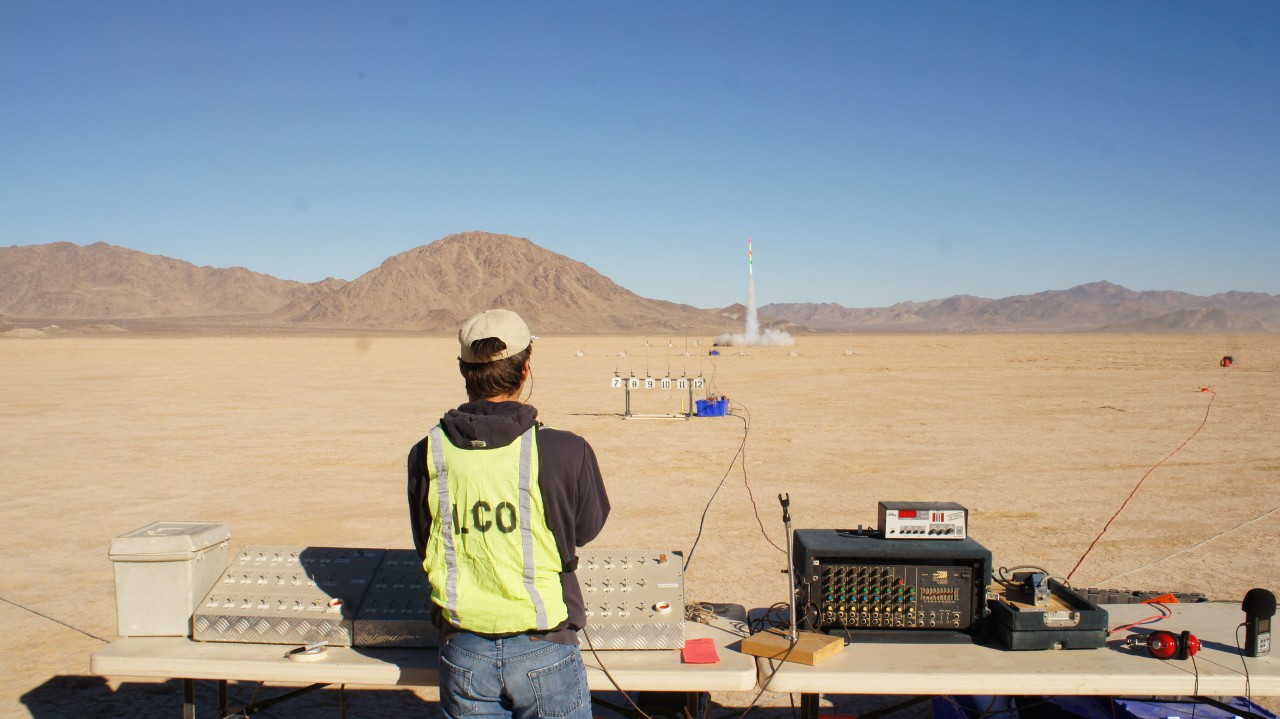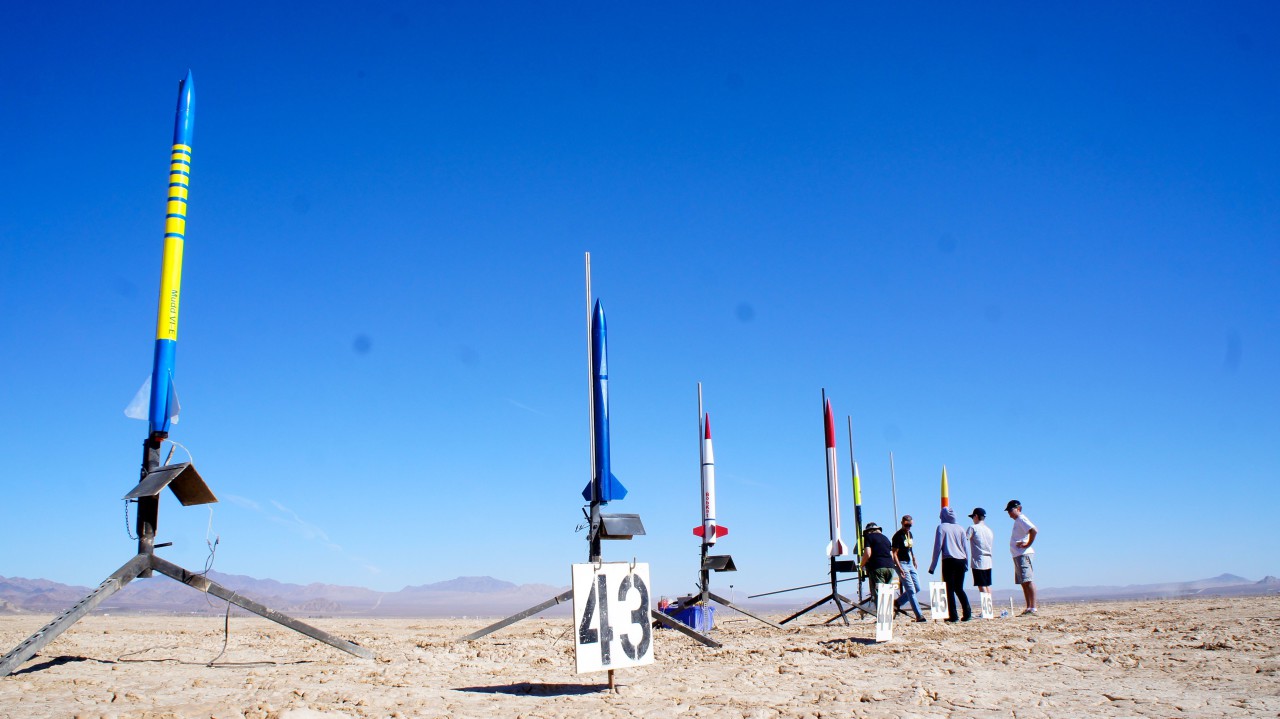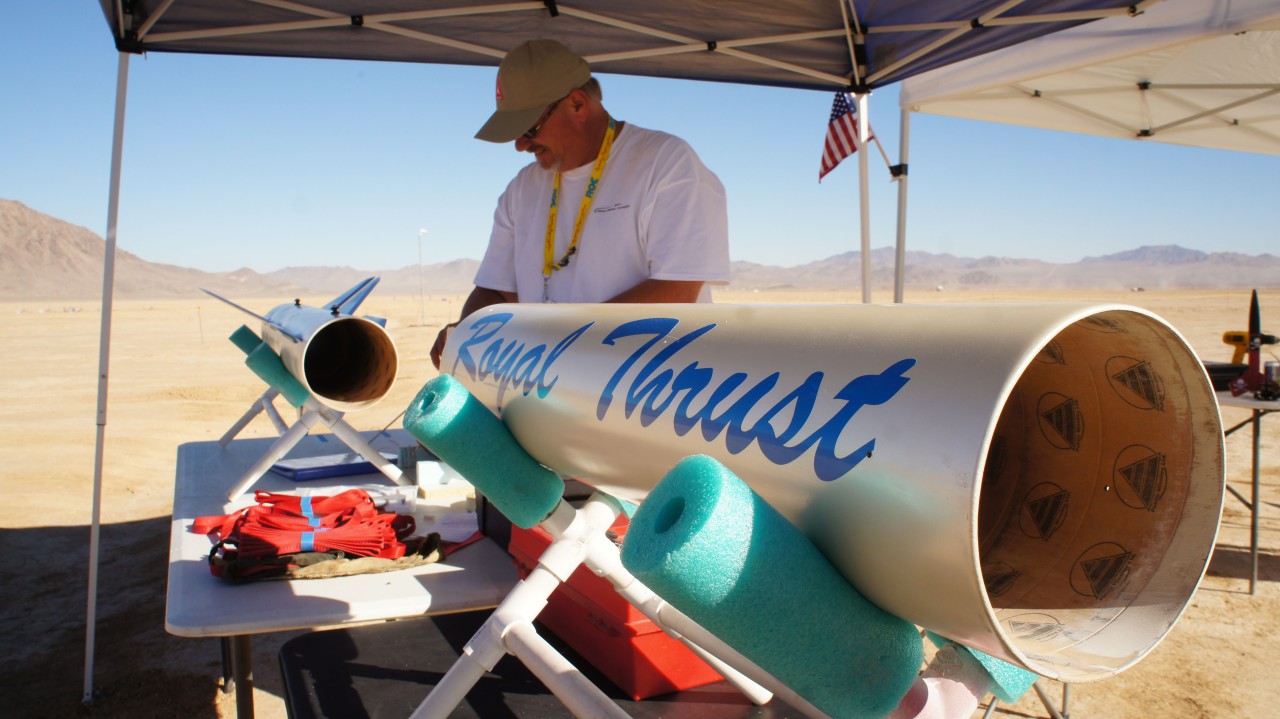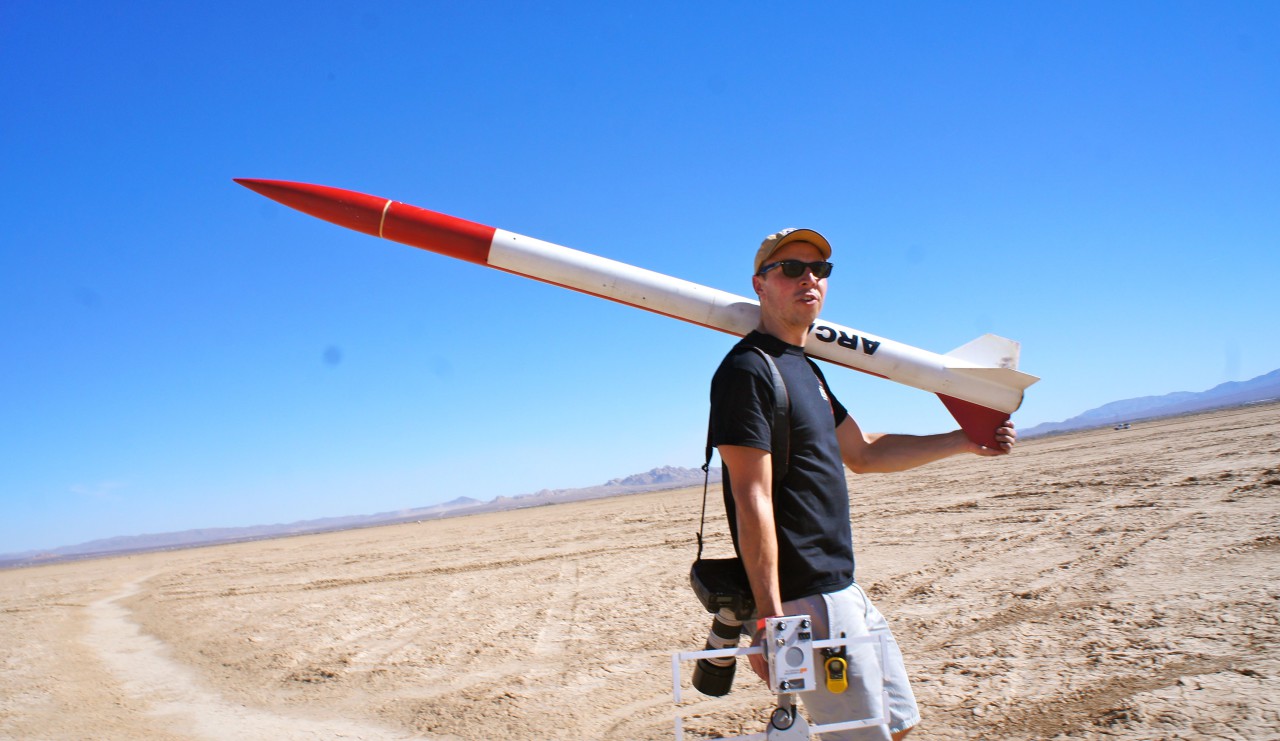Advertisement
3 — 2 — 1 — ROCstock! Crashing A Mojave Desert Rocket Launch Party
ResumeEarlier this month NASA tested Orion, a vehicle that it hopes will succeed the now-mothballed Space Shuttle in taking astronauts into space.
But as the pro rocket scientists work on new launch vehicles and spaceships, every month amateur rocketeers gather at events across the country to launch their rockets into the heavens. It’s part hobby, part sport, part little-kid wish fulfillment.
Pushing The Limits
On a vast, dry lake bed in the Mojave Desert, safely away from both populated areas and air traffic lanes, hundreds of people gathered for one of the largest amateur rocketry events in the world called ROCstock.
Organized by the Rocketry Organization of California, the motto for this twice-a-year gathering is "Peace, Love and Rockets."
"Everybody is out here to show something that they built can do something that they've designed it to do," said Bryce Chanes, one of the organizers of ROCstock and one of the event's launch control officers.

It's his job to do the countdowns, press the big red button on a control board that launches the rockets and provide flight color commentary for the crowd.
"The joy of launching rockets here — it’s something you can do almost no place else," he said. "And in almost no other hobby where something you can build in your garage can break the sound barrier, fly thousands of feet — fire, the noise, the excitement of it all. I mean, the people who come out here for fun are pushing the limits of the hobby, pushing the limits of where technology is currently. "
First Launch A Success
[sidebar title="Something's Fishy: Bass Fishing's History Of Cheating" width="630" align="right"]If you catch the biggest bass at a tournament, you might have to take a polygraph test. Why? Because cheating has always been part of bass fishing.[/sidebar]
The rockets are launched from 36 gantries temporarily set up on the floor of the dry lake bed. They range in size from small, foot-long missiles easily carried in the palm of one's hand to 9 and 10-foot-tall titans that take two or more people to wrestle into launch position.
Because the rockets use solid rocket propellant instead of liquid fuels, there's little chance of an explosion or other accident involving fire and flame.
Early one morning, Wayne Comfort and Sharon Hodges prepared their rocket, dubbed "Accelerator," for the ceremonial first launch of the day. Hodges and Comfort hoped their rocket, which was painted a striking green and orange and was the height of a full-grown man, would soar about 7,000 feet into the air.

Much of the pre-launch work involves double-checking the rocket's altimeters, which will control when its different stages burn and when its parachutes deploy so the rocket can return to Earth safely and gently.
"First thing I have to do is get it on the launch pad," Comfort said. "And then I have to turn on most of my altimeters. There are two of them, so if one doesn't function I have a redundant."
He explained the mechanisms of the instruments while the altimeters beeped and hummed.
"That tells me the altitude that it flew on the last flight," he said. "And then it will go to a lower tone, and this is the voltage: 9.2 volts. And the three beeps tell me that that the dual-deployment system is functional — that means it's ready to launch."
Some amateur rocketeers can spend thousands of dollars on this hobby, building rockets that can soar as high as 100,000 feet into the atmosphere.
With that, Comfort and Hodges retreated a safe distance to watch the rocket launch into a crystal-clear desert sky with no wind — ideal flying conditions. Comfort was very pleased by the launch, the flight and the beautiful white contrail the rocket left in its wake.
"If you could see the hair on my arms right now," he said. "We get a rush out of it. There's nothing like a really perfect, successful flight like that."
Pros And Amateurs Converge
Farther back, away from the launches and recoveries, stood a temporary village of RVs and campsites. At nearly every one, people worked to assemble and prepare rockets for launch.
"I wanted to build a rocket that can handle the biggest motor that you can legally fly in California, which is an 'M' class motor," said Mike Ospey, who inspects low-income housing for a living when he's not launching rockets. "This will fly this rocket to about — last time I flew it went to 13,100 feet."

Like so many other guys at ROCstock (and it's a guy-heavy scene), Ospey said he got bit by the rocketry bug as a child, watching the glory days of the American space program on TV.
"As a kid growing up in the late '60s, early '70s, I was always just amazed and in awe of the Apollo program," he said. "I remember the landing on the moon and watching the Saturn Vs go off. And I remember as a kid getting big pieces of paper and taping them together and drawing rockets, and I always wanted to build rockets. If I had it to do all over again, I'd probably try to get into the industry somehow, but my life took a different path. That's my connection — I’m a born-again rocketeer."
[sidebar title="More Wacky Sports" width="630" align="right"]From pea shooting to lawnmower demolition derby, we've covered some wacky "sports" on Only A Game. [/sidebar]But many at ROCstock, like aerospace engineer David Reese, were professional rocketeers working for NASA or private space companies. Why do this on their free time?
"You are working on rockets all day and you get stressed out by them and, you know, worried about the little minutiae of things going wrong on a professional flight, and this, you get to enjoy the flight without all the stress," Reese explained with a chuckle.
As he worked to prepare his rocket for launch, Reese said that some amateur rocketeers can spend thousands of dollars on this hobby, building rockets that can soar as high as 100,000 feet into the atmosphere — that's more than three times the height of Mount Everest.

Building a powerful rocket is great — but a rocketry connoisseur such as Reese looks for other factors.
"I am impressed by consistency and skill," he said. "If you are going to go out and drop a bunch of money on a rocket and fly it and crash it, it doesn't really impress me. But if you, year after year, fly complex rockets successfully with a lot of complex events in flight, do something unusual, something interesting, that impresses me."
With that, he took his own rocket out to launch — sharing the joy of watching something he built slip the bonds of Earth and pierce the sky.
More:
This segment aired on December 13, 2014.